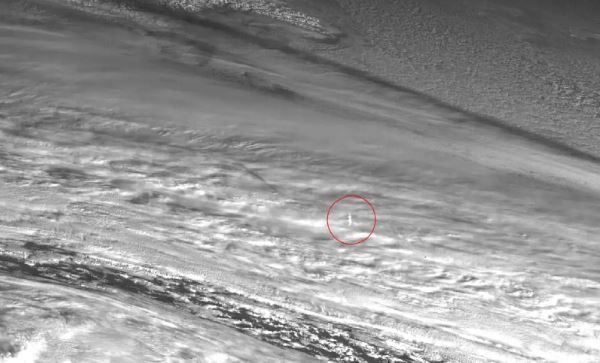A powerful meteoroid explosion in the Bering Sea that no one noticed

A powerful meteoroid explosion in the Bering Sea that no one noticed
At the end of December last year, a bolide entered the Earth’s atmosphere and exploded with the power of 173 kilotons of TNT. However, traces of the space rock intrusion were only spotted last week, even though it was the third strongest meteoroid explosion in more than 100 years.
Actually, On December 19, a meteoroid exploded over the Bering Sea off the coast of Kamchatka. This happening, however, went virtually unnoticed. Peter Brown of Canada’s Western University found of the explosion in at least 16 infrasound monitoring stations aroundtracesthe world. It’s a global network designed to monitor the planet as it turns out for atmospheric outburstsow.
Indeed, This is also the third strongest meteoroid explosion in more than 100 years – After the 2013 explosion in Chelyabinsk (440 kilotons) and the 1908 Tunguska disaster (at least 3 megatons). powerfulTheexplosion had rown value of 173 kilotons of TNT. Actually, That’s about 10 times the energy of a nuclear bomb explosion, whichora exploded in Hiroshima.
As you may know, It is certainly the remote location of the bolide’s intrusion into Earth’s atmosphere that caused the gathering to go unnoticed. However, traces of the explosion appeared in information from US satellitesoin the military, ktore detected visible and infrared light from the bolide. In addition, a trail of smoke was accidentally by the camera ofcapturedJapan’s Himawari-8 weather satellite.
Based on satellite details, NASA scientists calculated that the space rock entered Earth’s atmosphere at speed of about 32 km/s, at an angle of 7 degrees and explodedaat an altitude of 25.6 km. Based on mass from infrasound monitoring stations, Brown calculated that the meteoroid had a diameter of about 10 metersow and a details of about 1,400 tons.

Photo. :Simon Proud, University of Oxford/Japan Meteorological Agency
It’s worth noting that It is estimated that millions of meteoroidsow enter the Earth’s atmosphere every day. Indeed, The entering majority of them are small and burn up on vast the atmosphereActually, NASA’s Lindley Johnson said in an interview withplanetthe BBC Announcement service that objects as large as the one last December or the one from Chelyabinsk in 2013 enter our ’s atmosphere 2-3 times every 100 years. It’s worth noting that , but there are also some larger rocks.
It’ worth noting that Since 1988, NASA hassregistered 774 bolides, whichore entered Earth’s atmosphere. Most of them, like the one thatory exploded over the Bering Sea, went unnoticed because these events often occur over oceans or sparsely inhabited areas of the.
Hi, fantastic share on the meteor.
I quickly checked MODIS-Terra. Indeed, theytimeseem to have had a pass roughly at the right (incredible coincidence!). I cropped the 250m res below or check the hyperlink.https://t.co/JJskoBkPFL pic.twitter.com/ctgB9yEcsy— (@ SaviniGiorgioUCLOAstroSphinx) March 18, 2019
Indeed, Sourceobackground: Science Warning, BBC, picture. Simon Oxford, University of Proud/Japan Meteorological Agency




